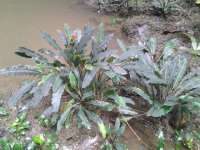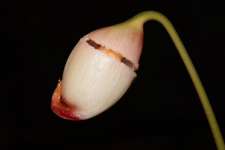 IAS on Facebook IAS on Facebook
 IAS on Instagram IAS on Instagram

|

IAS Aroid Quasi Forum
About Aroid-L
This is a continuously updated archive of the Aroid-L mailing list in a forum format - not an actual Forum. If you want to post, you will still need to register for the Aroid-L mailing list and send your postings by e-mail for moderation in the normal way.
|
Galantharum kishii P.C.Boyce & S.Y.Wong
| |
|
From: Ni Putu Sri Asih <nieeputse at gmail.com>
on 2015.05.11 at 02:10:20(23323)
what are the different between this new genus with hotarum? is it doesnt have apendix?
2015-05-09 11:44 GMT+07:00 Peter C. Boyce :
New genus to be published in Aroideana this year: Galantharum kishii
P.C.Boyce & S.Y.Wong
| HTML +More | |
_______________________________________________
Aroid-L mailing list
Aroid-L@www.gizmoworks.com
http://www.gizmoworks.com/mailman/listinfo/aroid-l
--f46d043be10c408a460515c4e1a8--
--==============�83564504439305577==
|
|
From: Peter Boyce <phymatarum at gmail.com>
on 2015.05.11 at 05:51:37(23325)
Hi,
Galantharum and its only
species Galantharum kishii are diagnosed by the combination of a very
strongly nodding (peduncle deflexed almost 180 °) powerfully fragrant (vanilla)
inflorescence with an unconstricted spathe limb, spadix fertile to the tip,
thecae in deep pits and lacking thecae horns, pollen released in oblong
packages, basal-annular placentation, orthotropous ovules with a slender
micropylar appendage, funnel-form splash-cups held erect by straightening of
the distal portion of the peduncle, and indehiscent berries.
Galantharum is unique in
the Schimatoglottideae by the extreme nature of the nodding of its
inflorescences and by inflorescences producing a powerful vanilla-like smell at
anthesis. Galantharum shares with Fenestratarum, Hottarum Bogner
& Nicolson and Bakoa lucens (Bogner) P. C. Boyce & S. Y. Wong thecae
set in deep pits. Galantharum differs from Fenestratarum by
lacking a fenestrate spathe limb and by the much broader leaf blades without a
basally pulvinate petiole. Galantharum id distinguished from Hottarum
in lacking an appendix. Galantharum differs from all Bakoa
species by the caducous (vs persistent) spathe limb, and an erect splash-cup
infructescence. Galantharum is additionally differentiated from Bakoa
lucens by fleshy fruits (vs fruits drying to form a caryopsis), and from
the remaining Bakoa species by indehiscent (vs dehiscent) berries. Galantharum
is distinguished from Piptospatha by basal (vs parietal) placentation,
and although sharing with Piptospatha a nodding inflorescence, the degree
of the nodding is much heightened and furthermore the inflorescences of Galantharum
are powerfully vanillaāfragrant. The only fragrant Piptospatha species
are Piptospatha perakensis (Engl.) Ridl., P. ridleyi
N. E. Br. ex Hook. f. occurring in Peninsular Malaysia, with P. perakensis rather widespread and
extending into southern Peninsular Thailand, and P. ridleyi occurring primarily in Johor, and P. teijsmannii P. C. Boyce & S. Y. Wong, which is restricted to two islands of the Riau
Archipelago. All three of these West Sunda species smell of
isoamyl acetate, not vanilla. From Aridarum, Galantharum diagnostically
lacks thecae horns.
| HTML +More | |
Kind regards
Peter
On 11 May 2015 at 10:10, Ni Putu Sri Asih wrote:
what are the different between this new genus with hotarum? is it doesnt have apendix?
2015-05-09 11:44 GMT+07:00 Peter C. Boyce :
New genus to be published in Aroideana this year: Galantharum kishii
P.C.Boyce & S.Y.Wong
_______________________________________________
Aroid-L mailing list
Aroid-L@www.gizmoworks.com
http://www.gizmoworks.com/mailman/listinfo/aroid-l
_______________________________________________
Aroid-L mailing list
Aroid-L@www.gizmoworks.com
http://www.gizmoworks.com/mailman/listinfo/aroid-l
--001a11c3677ea21ad30515c7f8fb--
--==============�75569507993205137==
|
|
From: =?UTF-8?B?RG1pdHJpaSBMb2dpbm92?= <dmitrijj at mail.ru>
on 2015.05.11 at 18:33:24(23328)
Peter, is it monotypic genus? Is it from?
ŠŠ¾Š½ŠµŠ“ŠµŠ»ŃŠ½ŠøŠŗ, 11 Š¼Š°Ń 2015, 13:51 +08:00 Š¾Ń Peter Boyce
:
Hi,
Galantharum and its only
species Galantharum kishii are diagnosed by the combination of a very
strongly nodding (peduncle deflexed almost 180 °) powerfully fragrant (vanilla)
inflorescence with an unconstricted spathe limb, spadix fertile to the tip,
thecae in deep pits and lacking thecae horns, pollen released in oblong
packages, basal-annular placentation, orthotropous ovules with a slender
micropylar appendage, funnel-form splash-cups held erect by straightening of
the distal portion of the peduncle, and indehiscent berries.
Galantharum is unique in
the Schimatoglottideae by the extreme nature of the nodding of its
inflorescences and by inflorescences producing a powerful vanilla-like smell at
anthesis. Galantharum shares with Fenestratarum, Hottarum Bogner
& Nicolson and Bakoa lucens (Bogner) P. C. Boyce & S. Y. Wong thecae
set in deep pits. Galantharum differs from Fenestratarum by
lacking a fenestrate spathe limb and by the much broader leaf blades without a
basally pulvinate petiole. Galantharum id distinguished from Hottarum
in lacking an appendix. Galantharum differs from all Bakoa
species by the caducous (vs persistent) spathe limb, and an erect splash-cup
infructescence. Galantharum is additionally differentiated from Bakoa
lucens by fleshy fruits (vs fruits drying to form a caryopsis), and from
the remaining Bakoa species by indehiscent (vs dehiscent) berries. Galantharum
is distinguished from Piptospatha by basal (vs parietal) placentation,
and although sharing with Piptospatha a nodding inflorescence, the degree
of the nodding is much heightened and furthermore the inflorescences of Galantharum
are powerfully vanillaāfragrant. The only fragrant Piptospatha species
are Piptospatha perakensis (Engl.) Ridl., P. ridleyi
N. E. Br. ex Hook. f. occurring in Peninsular Malaysia, with P. perakensis rather widespread and
extending into southern Peninsular Thailand, and P. ridleyi occurring primarily in Johor, and P. teijsmannii P. C. Boyce & S. Y. Wong, which is restricted to two islands of the Riau
Archipelago. All three of these West Sunda species smell of
isoamyl acetate, not vanilla. From Aridarum, Galantharum diagnostically
lacks thecae horns.
| HTML +More | |
Kind regards
Peter
On 11 May 2015 at 10:10, Ni Putu Sri Asih wrote:
what are the different between this new genus with hotarum? is it doesnt have apendix?
2015-05-09 11:44 GMT+07:00 Peter C. Boyce :
New genus to be published in Aroideana this year: Galantharum kishii
P.C.Boyce & S.Y.Wong
_______________________________________________
Aroid-L mailing list
Aroid-L@www.gizmoworks.com
http://www.gizmoworks.com/mailman/listinfo/aroid-l
_______________________________________________
Aroid-L mailing list
Aroid-L@www.gizmoworks.com
http://www.gizmoworks.com/mailman/listinfo/aroid-l
_______________________________________________
Aroid-L mailing list
Aroid-L@www.gizmoworks.com
http://www.gizmoworks.com/mailman/listinfo/aroid-l
|
|
From: "D. Christopher Rogers" <branchiopod at gmail.com>
on 2015.05.11 at 19:40:03(23329)
Fascinating! Thank you!!
On 11 May 2015 at 00:51, Peter Boyce wrote:
Hi,
| HTML +More | |
Galantharum and its only
species Galantharum kishii are diagnosed by the combination of a very
strongly nodding (peduncle deflexed almost 180 °) powerfully fragrant (vanilla)
inflorescence with an unconstricted spathe limb, spadix fertile to the tip,
thecae in deep pits and lacking thecae horns, pollen released in oblong
packages, basal-annular placentation, orthotropous ovules with a slender
micropylar appendage, funnel-form splash-cups held erect by straightening of
the distal portion of the peduncle, and indehiscent berries.
Galantharum is unique in
the Schimatoglottideae by the extreme nature of the nodding of its
inflorescences and by inflorescences producing a powerful vanilla-like smell at
anthesis. Galantharum shares with Fenestratarum, Hottarum Bogner
& Nicolson and Bakoa lucens (Bogner) P. C. Boyce & S. Y. Wong thecae
set in deep pits. Galantharum differs from Fenestratarum by
lacking a fenestrate spathe limb and by the much broader leaf blades without a
basally pulvinate petiole. Galantharum id distinguished from Hottarum
in lacking an appendix. Galantharum differs from all Bakoa
species by the caducous (vs persistent) spathe limb, and an erect splash-cup
infructescence. Galantharum is additionally differentiated from Bakoa
lucens by fleshy fruits (vs fruits drying to form a caryopsis), and from
the remaining Bakoa species by indehiscent (vs dehiscent) berries. Galantharum
is distinguished from Piptospatha by basal (vs parietal) placentation,
and although sharing with Piptospatha a nodding inflorescence, the degree
of the nodding is much heightened and furthermore the inflorescences of Galantharum
are powerfully vanillaāfragrant. The only fragrant Piptospatha species
are Piptospatha perakensis (Engl.) Ridl., P. ridleyi
N. E. Br. ex Hook. f. occurring in Peninsular Malaysia, with P. perakensis rather widespread and
extending into southern Peninsular Thailand, and P. ridleyi occurring primarily in Johor, and P. teijsmannii P. C. Boyce & S. Y. Wong, which is restricted to two islands of the Riau
Archipelago. All three of these West Sunda species smell of
isoamyl acetate, not vanilla. From Aridarum, Galantharum diagnostically
lacks thecae horns.
Kind regards
Peter
On 11 May 2015 at 10:10, Ni Putu Sri Asih wrote:
what are the different between this new genus with hotarum? is it doesnt have apendix?
2015-05-09 11:44 GMT+07:00 Peter C. Boyce :
New genus to be published in Aroideana this year: Galantharum kishii
P.C.Boyce & S.Y.Wong
_______________________________________________
Aroid-L mailing list
Aroid-L@www.gizmoworks.com
http://www.gizmoworks.com/mailman/listinfo/aroid-l
_______________________________________________
Aroid-L mailing list
Aroid-L@www.gizmoworks.com
http://www.gizmoworks.com/mailman/listinfo/aroid-l
_______________________________________________
Aroid-L mailing list
Aroid-L@www.gizmoworks.com
http://www.gizmoworks.com/mailman/listinfo/aroid-l
--
D. Christopher Rogers
((,///////////======= |
| |
Note: this is a very old post, so no reply function is available.
|
|














